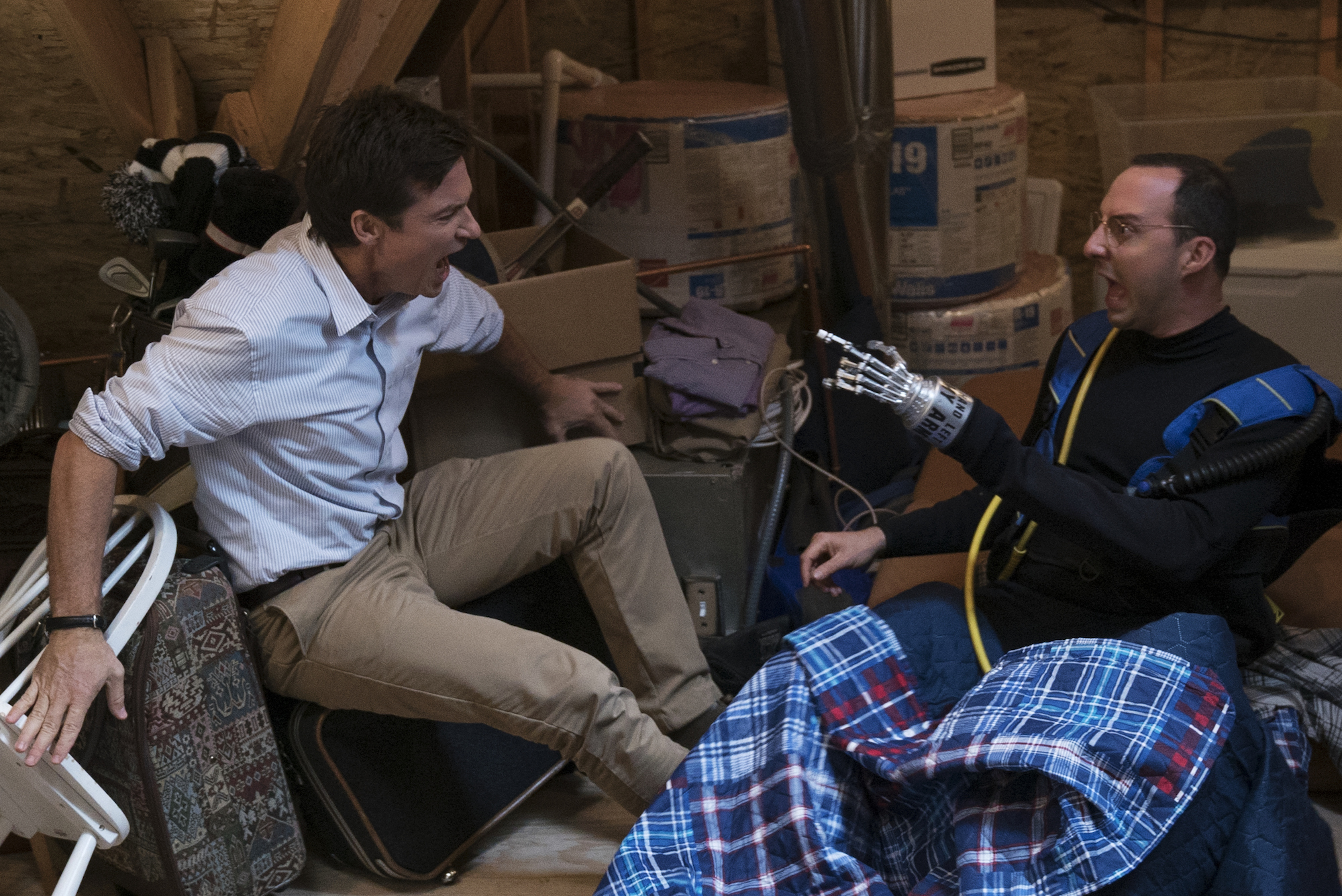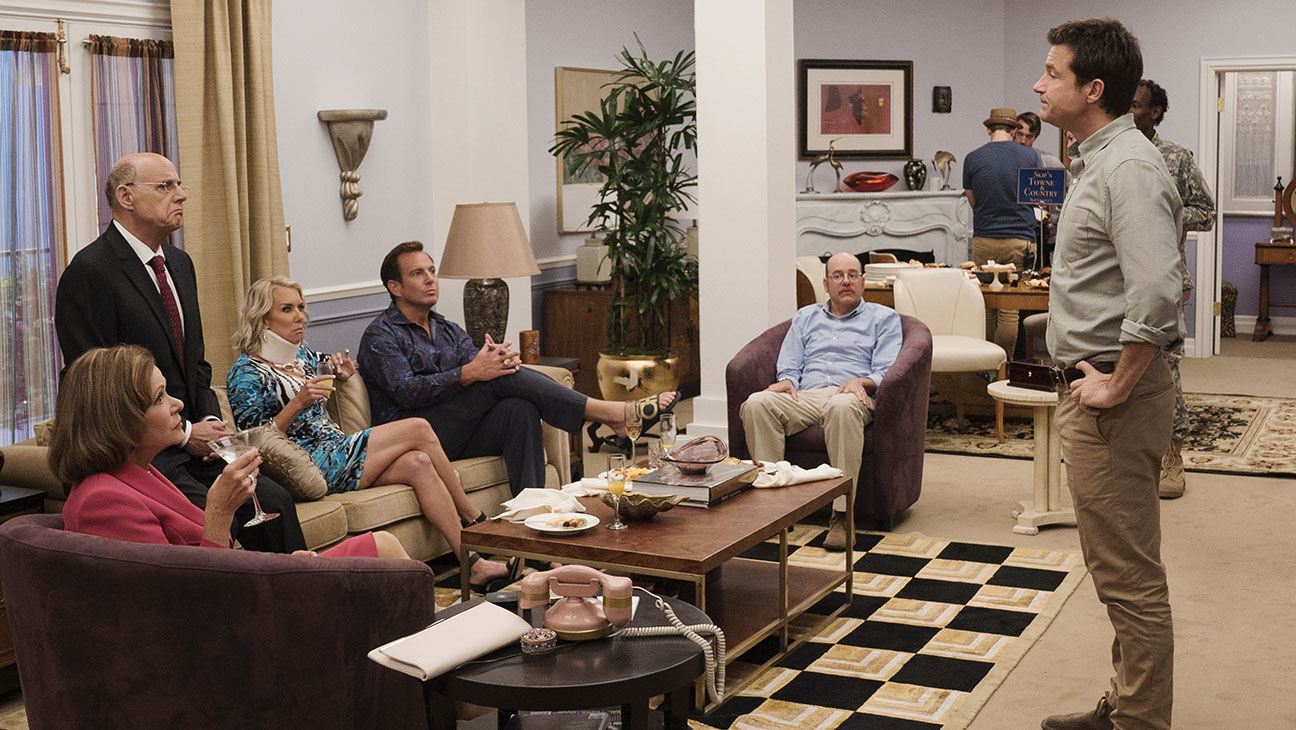TV REVIEW: ‘Arrested Development’ Season 5 is no Sudden Valley
Jason Bateman and Tony Hale star in the firth season of Arrested Development.
One of the fascinating dimensions of this era of Peak TV (are we at Plateau TV at this point?) is watching individual shows evolve over time. A little over 20 years ago, we might not have applied enough scrutiny to TV to bother figuring out which seasons of a show were better than others. Many programs just iterated on their basic concept every week; the idea of serialized storytelling, which can lead to both incredible highs and depressing lows in the life of a show, was much rarer than it is today.
This dynamic is heightened even more now that streaming giants like Netflix continue to revive “dead” shows and commission new episodes. In these cases, viewers need to contend with an extra variable: how does a show change if it’s been off the air for multiple years, if not decades? Is the spark that attracted them to the property in the first place still there? And how have the creatives behind the scenes modified their approach, adapting to production restrictions (like cast member schedules)?
One of the company’s first experiments with this was the revival of a favourite of mine: Arrested Development. Netflix brought it back in 2013 for a new season, after Fox cancelled the show in 2006 following a three-season run. And in the intervening years, some notable things happened: the cast got a lot more successful, and their schedules got a lot harder to juggle. The prospect of getting everyone back together for an extended period of shooting was remote. And as a solution (and perhaps a means of keeping things interesting on a creative level) showrunner Mitch Hurwitz decided to play with the format a bit. Arrested evolved, and did it fast.
Michael Bluth (Bateman) reunites with his erstwhile family.
Of course, the results have been well documented and analyzed elsewhere. Season 4 of the show just felt off to loyal fans; the Bluth family was rarely seen all in one room together, blocks of episodes would go by without seeing some of the core characters, and some shoddy-looking greenscreen work was used to paste performances together. In short, it felt like the fourth season was a lazy illusion performed by Gob (Will Arnett).
Now, after another five years and a controversial and largely ineffective re-edit of Season 4 by Hurwitz, Netflix has brought eight new episodes of Arrested to the masses, forming the first half of a two-part Season 5. Out of due diligence, I decided to re-watch the entire series from the beginning before tackling the new episodes, including the remixed 2013 block. And while I came away feeling better about the overall state of the Netflix revival than I had before, Hurwitz and his team have yet to recapture the manic energy and densely layered stories of the first three seasons.
Thankfully, the Arrested team got a better shot at a reunion this time. There are no obvious examples of actors being composited together to make up a scene. The fragmented, character-specific plotlines from Season 4 also disappear, leaving a familiar structure that hews more closely to Michael Bluth (Jason Bateman), as it did in the original run. This also means that another thing that drove me crazy about Season 4, the constant repetition of previous scenes with extra narration, disappeared as well. Ron Howard’s voiceover may be a stroke of genius and a key part of the show, but I don’t need a flashback and an explanation every few minutes.
With the mess of the last season mostly cleaned up, the new episodes still need to circle around to where the story left off. Lucille Two (Liza Minnelli) is still missing after the events of Cinco de Cuatro, and Michael is still trying to distance himself from his family, particularly his son George Michael (Michael Cera) who is somehow dating the same woman as his father. This leads to some confusing timeline jumps (on the order of months and years, depending on the scene), culminating in Michael reuniting with the family just as his sister Lindsay (Portia de Rossi) begins a run for a seat in Congress.
Murph (Kyle Mooney) and Tobias (David Cross) prepare for a performance.
While it’s comforting to see Michael back as the focus of the show, his character is still rudderless; no longer the president of the Bluth Company, he picks up a job at Google, and this means he’s far less invested in keeping his family in check. Even though the change does reflect how Michael finally makes good on his many threats to stop saving his family from themselves, it also means it’s harder to care about Michael. He’s no longer the noblest individual in a family of selfish assholes, and the show doesn’t really present us with a new character to take his place.
In terms of recurring jokes, the material still feels a tad thin. There don’t seem to be as many candidates for addition to the huge roster of self-referential humour that has come to define Arrested. Nothing like “Ann?”, “I just blued myself”, “I’m a monster!” or “No touching!” For all of its faults, at least Season 4 did give us a couple of memorable bits like Gob’s “Sound of Silence” daydreams and the mustard and parmesan diet. But as Sonia Saraiya points out in Vanity Fair, sometimes the show takes an entire season to truly deliver on a joke, so there’s still space for some slow-fuse ideas to explode.
Time will tell whether Season 5 can continue to repair the structural problems introduced by the previous season, and whether there are even more episodes (or a movie) on the horizon. For now, it appears that the show has stopped following the Bluths’ example: it’s no longer digging its own grave.



